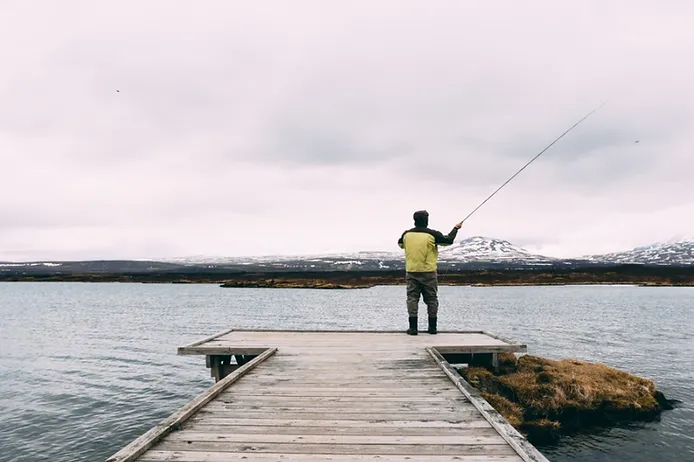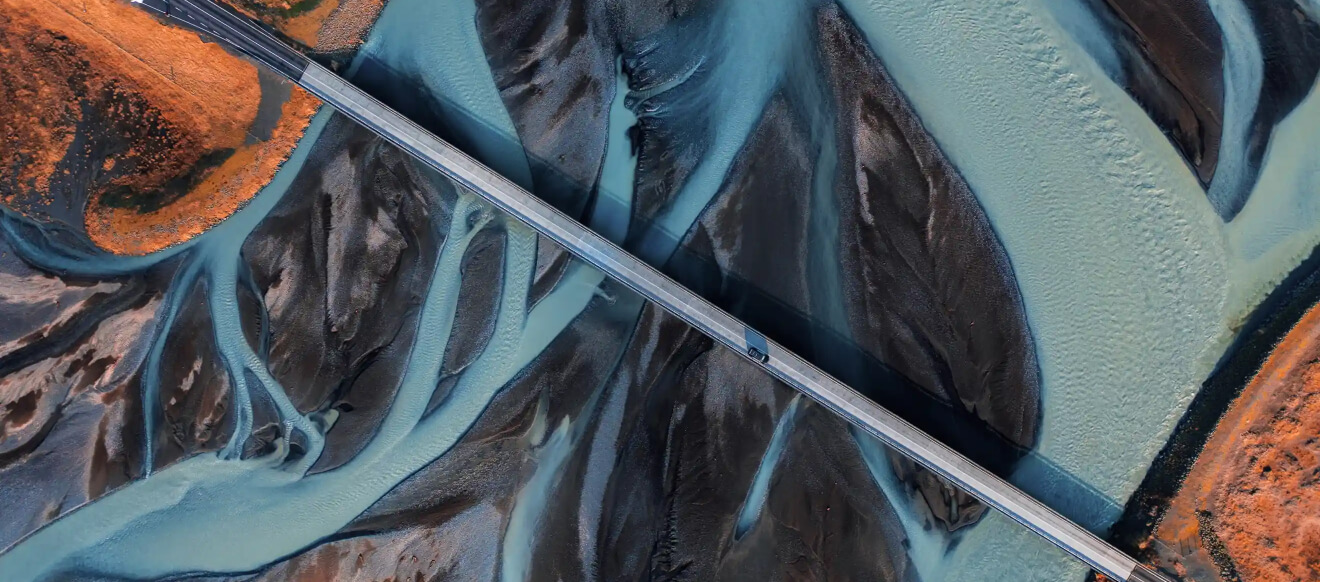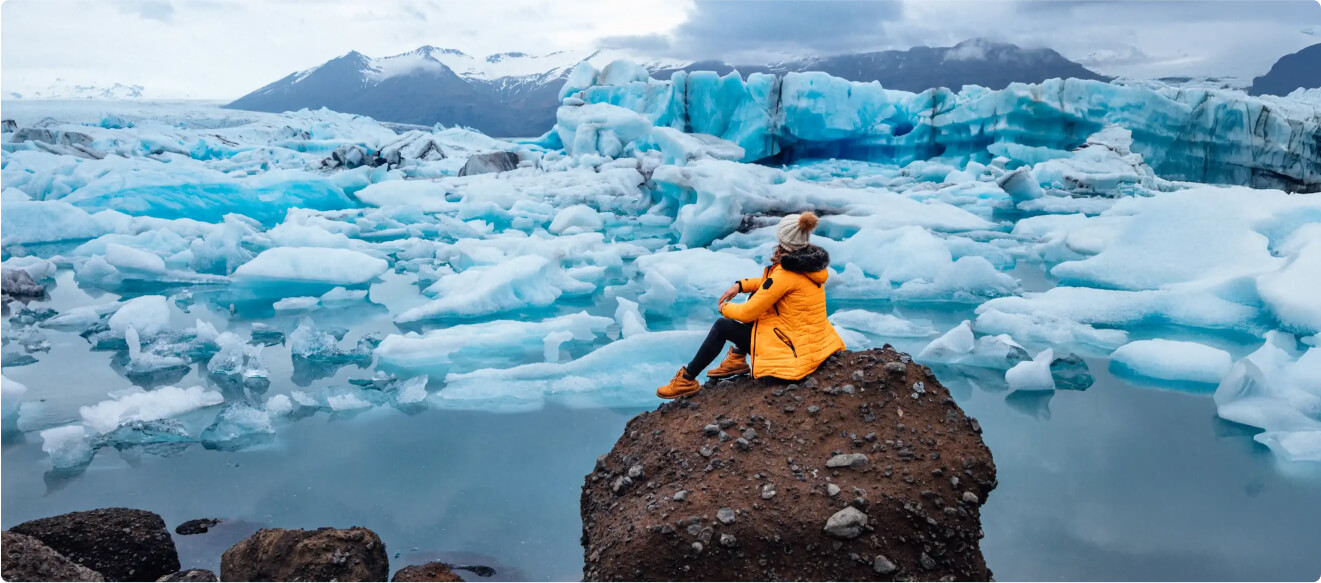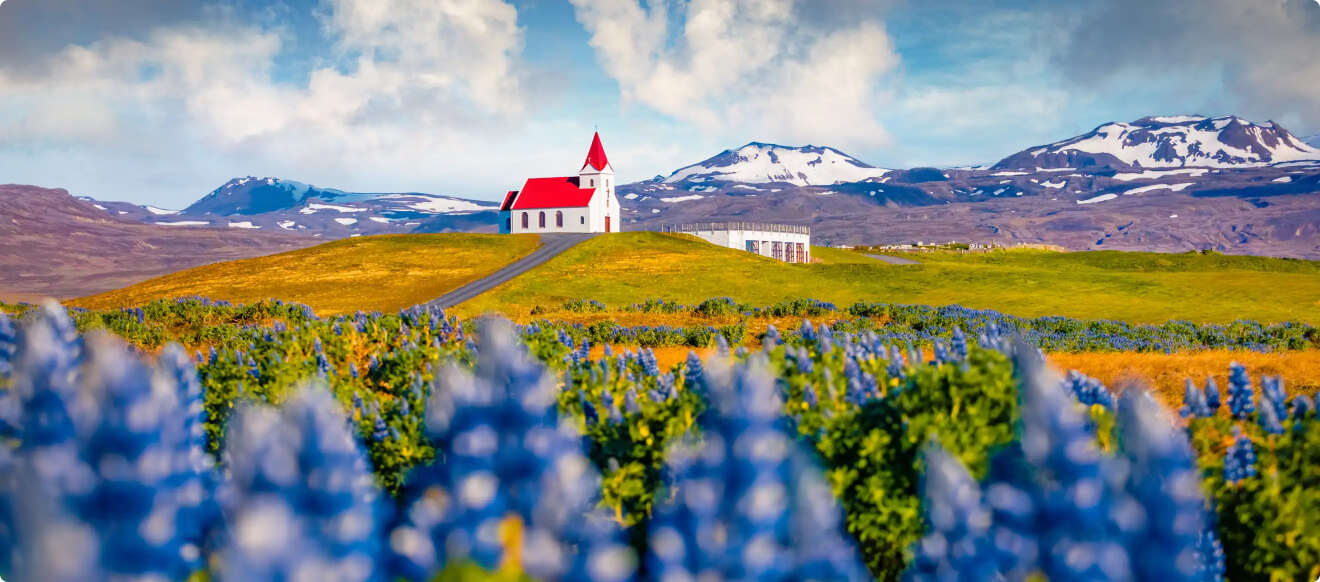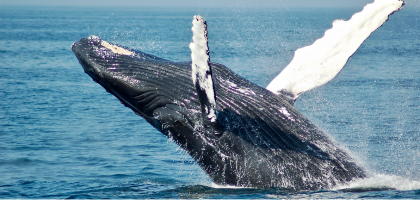Since Iceland was first settled in 874CE, its inhabitants have maintained a strong connection to the ocean. Today, it is actually mandatory that all Icelandic children learn how to swim. With few natural food sources on the island when they arrived, Icelanders had to look outwards to eat.
And so, fishing has always been a significant part of the Icelandic culture. It is reflected in Iceland's traditional cuisine, diets and economy. It is currently is our largest export! The sport is also so popular here that tourists travel from far away to come fishing in Iceland.
Where Can I Fly Fish in Iceland?
If there is any reader that doesn’t know about this, I’ll explain fly fishing. It varies from spin fishing, or ‘regular’ fishing in several ways. The rods used are lighter, as are the lines. ‘Flies’ are used to attract fish instead of lures, and typically fly fishing is conducted in moving water. So where can you complete some fly fishing in Iceland?
One of the most popular places is the West Ranga River. This is located on the south coast, about 90km (56 miles) east of the capital of Iceland, Reykjavík. This river is known for its abundance of Atlantic salmon, which usually range from 6-9 pounds. The salmon season in West Ranga runs from 20th June to 20th October.
It is also possible to go fly fishing for Iceland’s trout population. The Svarta (translation: Black) River in the north of the country contains an abundance of brown trout. This river has been fly-only and catch and release for some time, and the average trout is 3-6 pounds.
This is certainly one of the best places to conduct Iceland trout fishing, with stunning views and a serene atmosphere. To access Svarta River, head to Bárðardalur along the north coast, 52km (32 miles) from Akureyri. The season runs from 1st June to 15th September.
What Fish Can you Catch in Iceland?
We have five species of freshwater fish: the Atlantic salmon, the Arctic char, the brown trout, the three-spined stickleback, and the eel. Let’s take a look at each of the fish you could catch:
Atlantic Salmon
This species belongs to the largest family of salmon and can grow up to one meter long. They spend the first years of their life in the rivers where they were spawned, then migrate to the sea. When they themselves are ready to spawn, they return to freshwater.
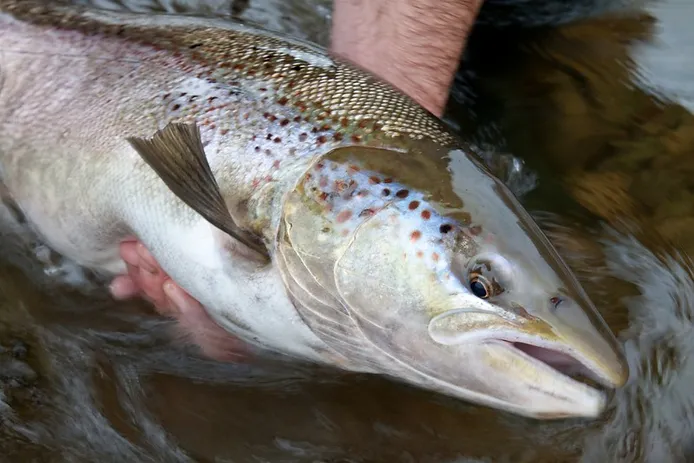
Arctic Char
This is Iceland’s most common freshwater fish species. They are able to withstand cold temperatures and so are found in many of the country’s colder rivers and lakes. They are generally small, between ½ to 2 pounds, but fish up to 5 pounds can be found. They can migrate to the sea or be landlocked and remain in freshwater for their whole lives. The prime season to catch the Arctic char is from July to the middle of August.
Brown Trout
At the end of the last ice age, populations of brown trout were trapped in Iceland’s lakes when the ice melted. The trout in these lakes can reach an enormous size, especially in lake Þingvallavatn. Brown trout over 20 pounds are regularly caught at this spot. The prime season for our lake trout is June to August. Additionally, there are the free run brown trout, who live in Iceland’s rivers and migrate to the ocean. These river trout can be caught with fly fishing, as mentioned above.
Three-Spined Stickleback
These are some of the smallest of Iceland’s fish, generally reaching a length of 3-4 centimeters. They cohabit lakes such as Þingvallavatn with the brown trout and landlocked salmon. You’ll have a competition to catch them, though. They are a source of food for the larger fish species they share their habitat with.
Eel
The Icelandic eel population is a combination of the European eel, American eel, and crossbreeds of the two. Their size and weight vary but they can grow longer than 1 meter. They are found in rivers along the lowlands of the south coast. Eel is not commonly eaten in Iceland.
Catfish
The Atlantic catfish can grow large; up to 1 ½ meters long, and weigh as much as 24kg (53 pounds). Many have distinctive spots or stripes and this species is a popular dish in Iceland. Also known as the wolffish, variants of the catfish have adapted long, spiky front teeth. These teeth and their powerful jaws are designed for crushing shellfish.
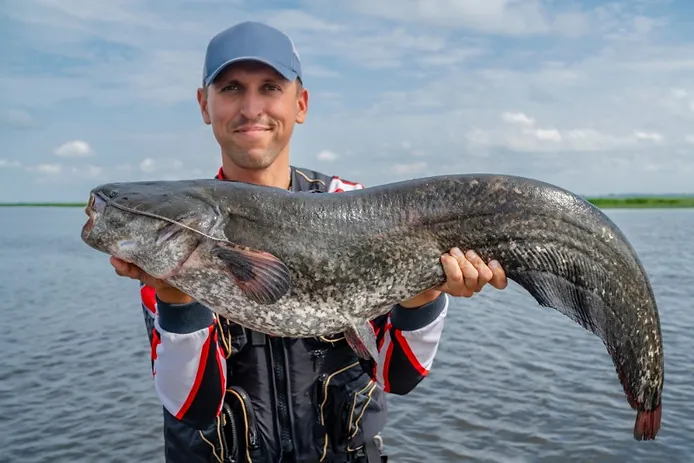
What Permits do you Need to Fish in Iceland?
In Iceland, all rivers are private, as are most lakes. So, you will most likely need to obtain a permit to fish here. The permits are issued on a daily basis and only to the specific lake or river you have requested. There is also a ‘Fishing Card’ option. This will allow you to fish at any one of 34 lakes around the island. This card, or cards for individual lakes around the country, can be ordered here. This website provides information about the restrictions for each lake.
Rod fishing is only legal for 12 hours per day during the season, from 7am until sunset. The private Fishery Associations that are responsible for their respective rivers or lakes can reduce these hours. Note also that it is illegal to use any tackle that hooks a fish without it chasing it. If you are bringing your own equipment from your country, it must be thoroughly disinfected before use by a veterinarian. A certificate of disinfection must be presented upon arrival in Iceland. If you cannot provide a certificate, the equipment will be disinfected by customs officers before you leave the airport.
These restrictions are applicable to freshwater fishing; you do not need a permit to rod fish from the shore. You can get in some Reykjavík fishing from the Old Harbour, and there are a few options for this. You can either rent a rod from the nearby Go Fishing Office, or take a sea angling tour. You can either throw your caught fish back or take them home for dinner.
Alternatively, many local restaurants will prepare your fish to eat for you, for a fee. During your shore fishing in Iceland experience, you will most commonly come across Atlantic cod and catfish. The Atlantic cod will be on their migration journey, either out to sea or back to the river. Let’s have a look at the other species.
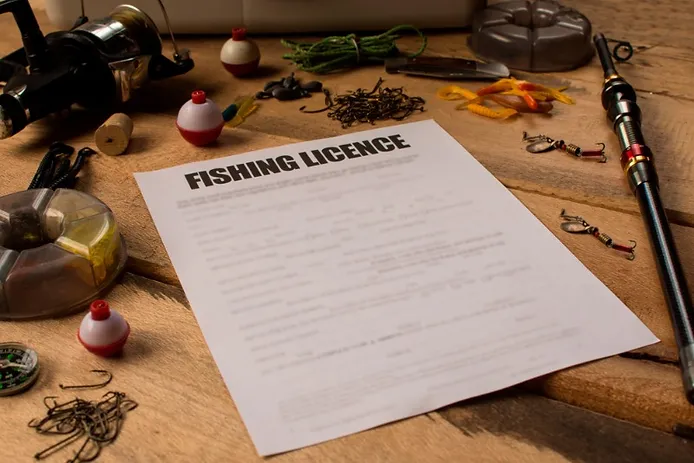
Ice Fishing in Iceland
All this talk of summer season fishing, but what if you come here in the winter? Well, fishing in the winter in Iceland is possible, but it will require a different style. It is in fact possible to go ice fishing near Reykjavík.
Just over an hour’s drive north, about 70km (43 miles) away are three lakes that are popular for ice fishing: Eyrarvatn, Þórustaðavatn and Geitabergsvatn. It is worth noting that fishing is only recommended here from February until April. The ice may not be thick enough at other times to support you. As the fishing season runs from April to October, fishing in November to January in Iceland is best avoided.
In spite of its name, Iceland is not renowned for its abundance of ice fishing. These days, the land of ice and fire does not always have cold enough winters to support the activity. The north of the country will have the most secure chance, and there are day tours that leave from Akureyri.
So, how do you ice fish? You drill or saw a hole through the ice, then drop a hooked and baited line into the water. Then you wait. So, the most important consideration is to be dressed properly. Remember that you will be sitting still for a period of time, so wear insulated clothing. Iceland is known for its strong wind and occasional storms, so check the forecast before heading out, on vedur. Regardless of the season, it is best to always plan your trip in advance. And bring a flask with a hot drink.
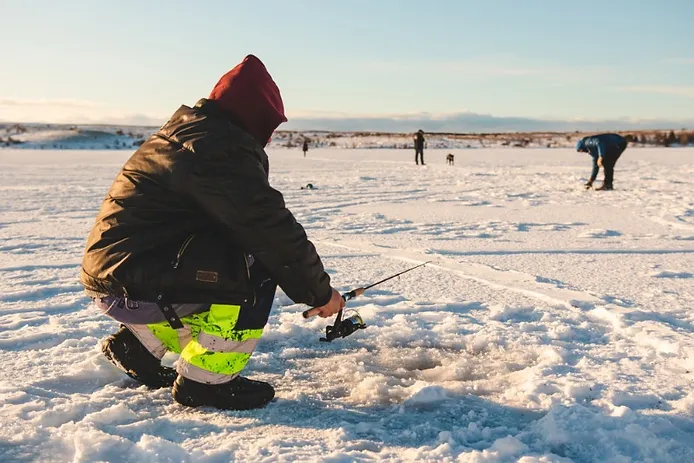
Guided Fishing Tours
There are several companies that offer both sea boat fishing tours and guided freshwater tours. Another option is combining your fishing experience with sightseeing, such as completing the Golden Circle. These companies can organize any fishing permits you may require and ensure you adhere to local regulations. Organized fishing tours run from April to October and are weather dependent. Equipment hire is generally included.
Make Fishing Part of Your Iceland Adventure
When you have a holiday packed with excursions around Iceland, it’s nice to spend a day doing something more relaxed. Why not jump in your rental car, pick a lake, and do a spot of fishing? It’s a wonderful way to enjoy Iceland’s serenity. We have a population of only 364,000 people and some of the cleanest air and water in the world.
Come and enjoy it with us, but please enjoy responsibly by minimizing your impact on the environment. Familiarize yourselves with both the fishing restrictions and other laws before you arrive. For instance, in Iceland, you must have your headlights on at all times when driving, even a rental car in Iceland. Come and enjoy Iceland’s nature with us.




